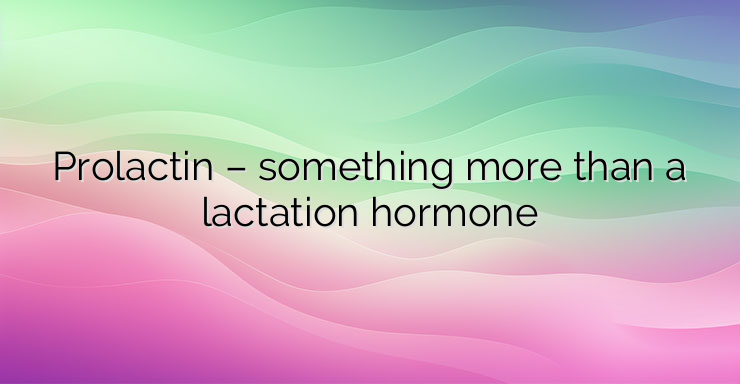Prolactin is a well-known hormone with its role in humans to stimulate the development of mammary tissue during pregnancy and the production of breast milk during lactation. Additionally, it is involved in numerous processes in the human body and over 300 in vertebrates. Prolactin is synthesized and secreted by the pituitary gland. The lactotroph cells that produce it are scattered throughout the anterior lobe of the pituitary gland. In women (especially in multiparous women), the amount of lactotrophs is greater (10-30%). There are receptors for it in various tissues of the human body – breast, liver, ovaries, testicles and prostate. The main site of action of prolactin is the breast. During pregnancy, prolactin secretion increases and together with other hormones (estrogens, progesterone, placental lactogen, insulin and cortisol) the mammary glands grow and the synthesis of milk proteins, lipids and carbohydrates necessary for the formation of milk is stimulated. Outside the period of pregnancy, prolactin has no bearing on the normal development of the mammary glands in man. After birth, the sharp drop in estrogen, progesterone and placental lactogen levels serve as a stimulus to initiate lactation. This phenomenon is used to stop milk secretion after childbirth with high doses of estrogens. It also explains the occurrence of galactorrhea and hyperprolactinemia after discontinuation of oral contraceptives or estrogen therapy. Although basal prolactin levels fall in the postpartum period, lactation is maintained by continued nursing of the infant. Prolactin levels are very high in the fetus in utero and in newborns, but decrease in the first few months. Although prolactin is not known to play a physiological role in the regulation of gonadal function, hyperprolactinemia results in hypogonadism in both sexes. In women, the consequences are a shortened luteal phase and subsequent anovulation (absence of ovulation), oligomenorrhea (prolonged menstrual cycle) or amenorrhea and, as a result, infertility. In men, an abnormal increase in prolactin levels leads to a decrease in testosterone and suppression of spermatogenesis, which are clinically manifested by decreased libido, impotence and sterility. NEWS_MORE_BOX Prolactin also acts as an immunomodulator. Macrophages, T- and B-lymphocytes have prolactin receptors. It modulates and stimulates the proliferation, differentiation and survival of immune cells. The hormone has known metabolic effects and is involved in the control of the water-electrolyte balance – it stimulates protein synthesis and lipogenesis, lowers carbohydrate tolerance and, although slightly, affects chondrogenesis. In animals, it is involved in the processes of hibernation, nesting and migration of birds and also strengthens the maternal instinct in mice and birds. This is the hormone that provides our body with sexual satisfaction after intercourse. Immediately after orgasm, prolactin levels rise significantly. This phenomenon is observed in both men and women.High prolactin levels persist for about 60 minutes after orgasm, then decrease and reach normal values. The period marks the so-called sexual refractory period. By itself, sexual arousal, without reaching orgasm, does not lead to the same changes in prolactin levels. The condition differs significantly from the pathological rise in prolactin in hyperprolactinemia – which leads to decreased libido and sexual dysfunction in both men and women. The change in prolactin levels after orgasm is of lesser magnitude and duration compared to the persistently elevated levels in hyperprolactinemia. A clinical study involving a male with a history of multiple orgasms found no post-orgasm rise in prolactin levels and a short refractory period (mean 3 minutes) compared to 9 healthy male controls with elevated prolactin levels and a normal refractory period (average 10-20 minutes). The study shows the role of the rise in prolactin levels after orgasm as one of the mechanisms regulating the sexual refractory period.


Leave a Reply